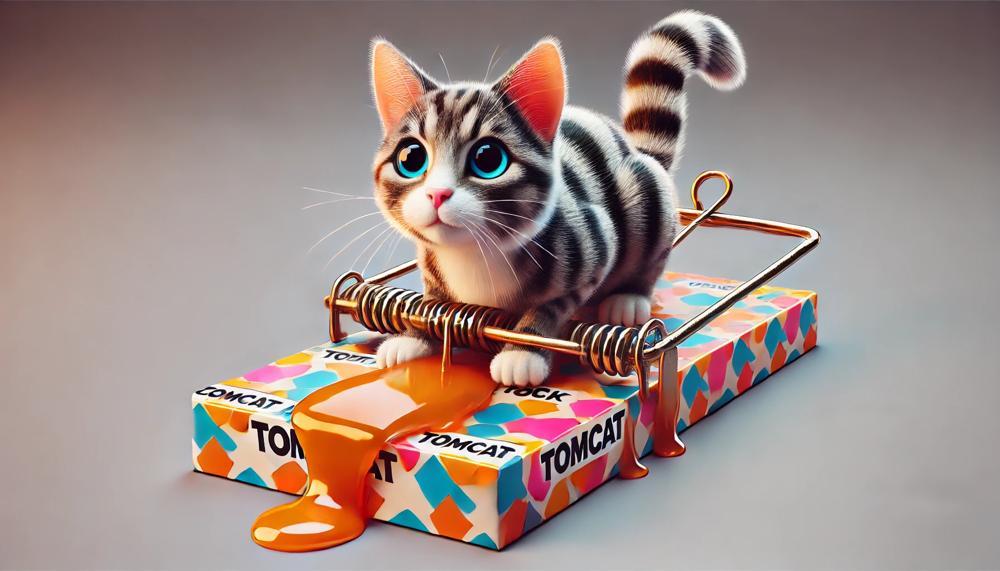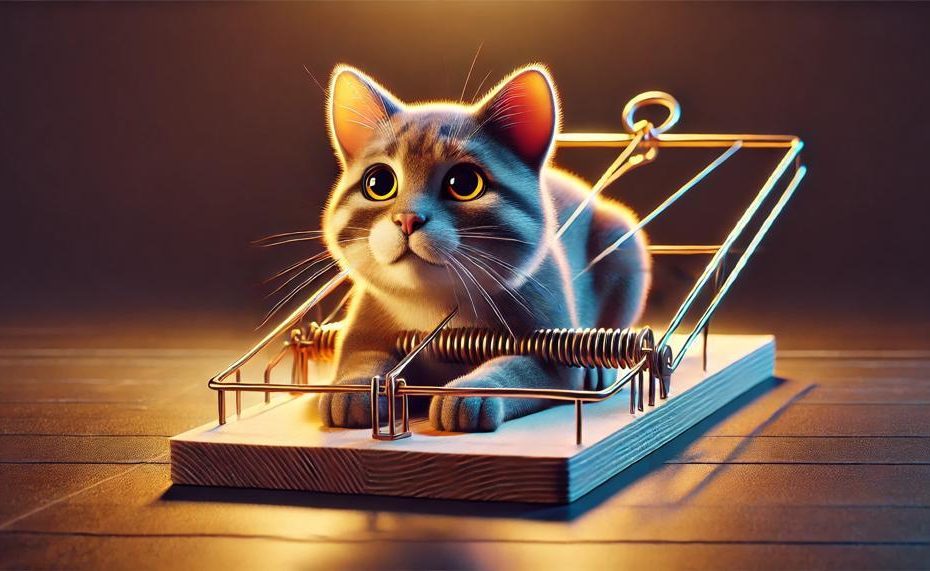No, Tomcat Glue Traps Are Not Poisonous
Tomcat glue traps are a popular choice for tackling pest problems. These traps use a potent adhesive to catch and immobilize pests. But are they poisonous? The short answer is no. The adhesive used in Tomcat glue traps is non-toxic, making them a safer option for homes with children and pets. However, it’s important to handle them carefully to avoid any unintended consequences.
Key Takeaways:
- Non-toxic Adhesive: Safe for humans and pets, though contact can cause skin irritation or allergic reactions.
- Potential Harm to Wildlife: Birds, reptiles, and small mammals can get trapped, leading to harm or death.
- Proper Usage is Crucial: Place traps out of reach of children and pets, check them regularly, and dispose of them properly.
- Accidental Contact: Seek medical attention if needed and take steps to prevent future accidents.
- Humane Alternatives: Consider live traps, snap traps, electronic repellents, or integrated pest management for a more humane approach.
Ready to learn more about how to use Tomcat glue traps effectively and safely? Let’s dive into the details.
Table of Contents
Update Location
Updating the location of your Tomcat glue traps to ensure the safety of your pets and children involves a few strategic steps. Here’s a detailed guide:
| Step | Action | Details |
| 1 | Choose Safe Locations | Place traps where pets and children can’t reach, like behind furniture, inside cabinets, or on high shelves. |
| 2 | Use Protective Covers | Use covers or enclosures for traps to prevent accidental contact. DIY barriers can also be effective. |
| 3 | Check Regularly | Inspect traps frequently to ensure they are intact and haven’t been disturbed. |
| 4 | Proper Disposal | Dispose of used traps in sealed plastic bags, using gloves and tools for handling. |
| 5 | Consider Alternative Methods | Use safer options like snap or electronic traps and focus on preventative pest management techniques. |
Are Tomcat Glue Traps Poisonous?
Tomcat glue traps, while effective for pest control, pose several risks. The main risks include accidental contact or ingestion by humans and non-target animals, which can lead to harm despite the glue being non-toxic.
Non-target animals such as birds and reptiles can also get trapped, causing injury or death. Moreover, improper disposal can result in environmental contamination and wildlife harm.
To mitigate these risks, follow these safety guidelines:
- Proper Placement: Place traps in areas inaccessible to children and pets. Use protective covers to avoid accidental contact.
- Regular Monitoring: Check traps frequently to release non-target animals promptly and to ensure they remain effective.
- Safe Removal: If skin contact occurs, use vegetable oil to loosen the adhesive and wash thoroughly with soap and water. Seek medical attention if ingestion or prolonged exposure occurs.
- Responsible Disposal: Dispose of used traps in sealed plastic bags to prevent environmental contamination and harm to wildlife.
- Consider Alternatives: Use live traps, snap traps, electronic repellents, or integrated pest management techniques to reduce risks to non-target animals and improve safety.
Learn
Potential dangers of using Tomcat® glue traps and how to safely handle them

Tomcat® glue traps, while effective for pest control, come with several potential hazards:
Potential Dangers
Non-target Harm:
These traps can ensnare unintended victims such as birds, reptiles, and small mammals, leading to distress and injury.
Skin Irritation:
Although the adhesive is non-toxic, accidental skin contact can cause irritation or allergic reactions.
Environmental Impact:
Improper disposal can lead to environmental contamination, harming wildlife and ecosystems.
Safe Handling Instructions
Follow Manufacturer’s Instructions:
Always adhere to the guidelines provided by the manufacturer to ensure safe and effective use.
Placement:
Position traps in areas out of reach of children and pets to avoid accidental contact.
Regular Monitoring:
Check the traps regularly to manage caught pests promptly and humanely.
Disposal:
Dispose of used traps responsibly by sealing them in a plastic bag and placing them in a trash bin.
Accidental Contact:
If you or a pet comes into contact with the glue, use vegetable oil or petroleum jelly to gently remove the adhesive from the skin or fur.
Alternative Solutions
For those concerned about the ethical implications and potential hazards, consider these alternatives:
| Alternative Method | Benefits | Considerations |
| Live Traps | Humanely captures pests for relocation. | Requires regular monitoring and humane release. |
| Snap Traps | Quick and effective; reduces suffering. | Must be placed carefully to avoid harm to non-target animals. |
| Electronic Rodent Repellents | Non-lethal, uses ultrasonic waves to repel pests. | Effectiveness can vary; may not work in all situations. |
| Integrated Pest Management (IPM) | Combines multiple methods for long-term control. | Requires thorough planning and consistent application. |
For more information on ethical pest control methods, visit Integrated Pest Management on Wikipedia.
Support
When using Tomcat® glue traps, several safety precautions are crucial to prevent potential harm or poisoning. Follow these guidelines for safe usage:
| Precaution | Description | Details |
| Placement | Keep away from children and pets | Ensure that both active and unused traps are inaccessible to children and pets to avoid accidental tampering or ingestion. Place traps in areas that are less trafficked by family members and pets. |
| Disposal | Use gloves when handling | When disposing of used traps, wear gloves to prevent skin irritation. Properly seal the traps in a plastic bag before disposing of them in a trash bin. |
| Storage | Store properly and label | Unused traps should be stored in a secure location, away from food and reach of children and pets. Clearly label the storage container to avoid accidental exposure or ingestion. |
| Usage | Target rodents only | Only use glue traps for their intended purpose of catching rodents. Avoid using them for other animals or objects to prevent unintended harm. |
By following these precautions, you can ensure the safe and effective use of Tomcat® glue traps.
Country
Answer: Several countries and regions have prohibited the use of Tomcat glue traps due to concerns about their toxicity and inhumane nature. The bans aim to prevent the slow and painful deaths of animals such as mice, birds, chipmunks, lizards, snakes, and squirrels. These restrictions highlight the global shift towards more humane pest control methods.
| Country/Region | Details | Source |
| United Kingdom | Glue traps are banned for use by the general public due to their inhumane nature. Only licensed professionals can use them under strict regulations. | Government UK |
| Australia | Glue traps are banned in several states, including Victoria, due to animal welfare concerns. | Agriculture Victoria |
| New Zealand | Glue traps are prohibited for sale and use by the public to protect animal welfare. | Ministry for Primary Industries |
| Ireland | Glue traps are banned due to their potential to cause unnecessary suffering to animals. | Government of Ireland |
| Canada | Some provinces, such as British Columbia, have restrictions on the use of glue traps to minimize animal suffering. | SPCA British Columbia |
| California, USA | Ojai, California is one of the recent places to ban glue traps due to concerns about their cruelty and toxicity. | Ojai Santa Anita News |






